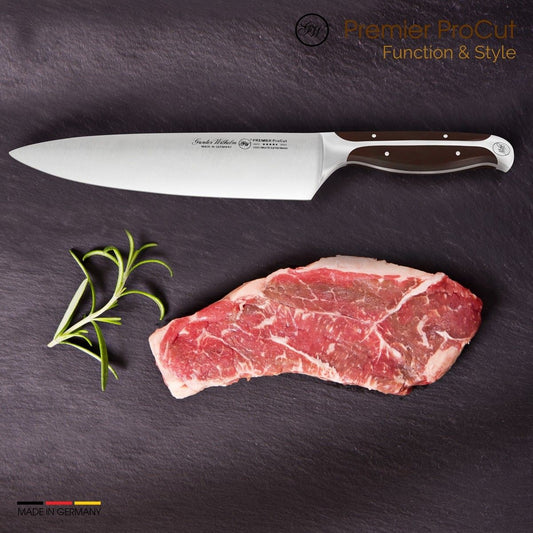Heatwave 2025: Why Extra-Spicy Foods Are Hotter Than Ever
🔥 Heatwave 2025: Why Extra-Spicy Foods Are Hotter Than Ever
Move over, salted caramel and pumpkin spice — 2025 belongs to the chili pepper. From ghost pepper oils dripping onto craft pizzas, to fire noodles that make even influencers cry into their ring lights, extra-spicy foods are no longer a niche thrill. They’re dominating restaurant menus, TikTok feeds, and even fine dining tables.
But why are we collectively turning our tongues into flamethrowers? Is it taste, trend, or just good old-fashioned masochism? Let’s dive into the scorching-hot world of spicy food in 2025, where pain equals pleasure and your digestive system should probably draft a will.
🌶️ The Scoville Arms Race
Once upon a time, ordering something “spicy” meant asking for a little extra jalapeño. Cute, right? Now, we’re in the middle of a Scoville arms race where chefs and food brands are competing to melt your face off. Carolina Reapers, Trinidad Moruga Scorpions, Ghost Peppers — these aren’t just ingredients, they’re celebrity peppers with their own fan bases.
Restaurants now boast “Level 10” challenges, food trucks offer sauces labeled “may require a waiver,” and supermarket shelves groan under bottles of artisan hot sauce with names like “Dragon’s Funeral” or “Mouth Volcano 5000.”
Why? Because consumers are addicted to the drama. Spicy food isn’t just food. It’s a sport, an identity, and a badge of honor. Saying “I love spicy food” in 2025 is like declaring you’ve run three marathons while carrying your own emotional baggage uphill. Respect.
🥢 Fire Noodles: TikTok’s Favorite Torture Device
If you’ve been online, you’ve seen the Fire Noodle Challenge. Influencers sit in front of their cameras, all confidence and bravado, and then ten seconds later — boom — tears, hiccups, sweat, and the dawning realization that their life choices have led them to this exact spicy abyss.
These Korean-inspired nuclear-red noodles have become global icons of spice. They’re affordable, dramatic, and endlessly shareable. And restaurants are cashing in by making their own “fire noodle” versions, some with cheese, some with seafood, others with enough capsaicin to sterilize a medical lab.
The result? An entire social media economy built on pain. One viral video of someone screaming into their bowl = millions of views = more noodle sales. Spice is the new currency of clout.
🥄 Chili Crunch: The Condiment That Ate the World
Ah yes, chili crunch — the MVP of 2025’s flavor trends. Part chili oil, part crispy garlic, part addictive magic dust, chili crunch has officially gone from niche Asian grocery staple to global obsession.
People put this stuff on literally everything: scrambled eggs, avocado toast, popcorn, burgers, mac & cheese, even dessert. (Yes, chili-crunch brownies exist. No, your grandmother doesn’t approve.)
Big brands noticed, too. McDonald’s tested a chili crunch McFlurry in Japan. Starbucks flirted with a spicy mocha latte. And artisanal condiment makers are launching $15 jars of small-batch chili crunch that somehow taste like fire, garlic, and the illusion of financial stability.
🔥 Ghost Pepper Oils: Pain in a Bottle
Ghost pepper oils are the culinary equivalent of skydiving. A single drop adds a smoky, fruity punch. Two drops and you’re bargaining with higher powers. Three drops and you’re writing your own obituary in chili sauce.
Chefs are sneaking these oils into cocktails (ever had a ghost pepper margarita?), desserts (ghost pepper truffles are a thing), and even brunch (because apparently hangovers aren’t enough suffering on their own).
Ghost pepper oil is proof that humans will pay extra for food that actively tries to hurt them. It’s toxic relationship energy in condiment form.
😂 Why We Love the Burn: The Science of Spice
Here’s the kicker: spicy food isn’t technically a flavor. It’s pain. Capsaicin, the compound that makes chilies hot, tricks your nerves into thinking you’re burning. The brain, ever the chaotic roommate, responds by releasing endorphins and dopamine — the same chemicals involved in a runner’s high.
Translation? Eating extra-spicy food is legal thrill-seeking. You get the rush of danger without the messy paperwork. It’s like bungee-jumping for your tongue.
Also, in the era of social media, mild pasta doesn’t trend. But crying into your fifth glass of oat milk while screaming “IT’S FINE” into your camera? That’s content gold.
🌍 Global Spice Fusion
The Heatwave 2025 trend isn’t just Western gimmickry. It’s a global exchange of culinary firepower. From Korean fire noodles to Mexican habanero salsas, Thai bird’s eye chili curries, and Indian vindaloo, spicy traditions are being remixed and intensified.
Fine dining chefs are serving fusion spice menus — think Sichuan peppercorn cacio e pepe, or Nashville hot chicken sushi rolls. Street food vendors are upping their spice levels to compete with viral trends. Even cocktail bars are stocking chili tinctures like they’re rare whiskeys.
📈 The Business of Heat
Let’s be clear: spice sells. Hot sauce is now a billion-dollar industry. TikTok food creators earn fortunes streaming their tear-streaked faces. And grocery aisles are filling up with spicy snacks — flaming hot chips, wasabi peas, jalapeño popcorn, habanero hummus.
Restaurants that embrace spice report higher engagement, more repeat customers, and free advertising every time a diner records themselves dramatically failing a spice challenge. In short: if you want customers in 2025, give them something that makes them cry (in a good way).
❓ FAQs About the Spice Wave
Is spicy food actually healthy?
Yes — studies suggest chilies can boost metabolism, improve circulation, and maybe even extend lifespan. Of course, that assumes you don’t drown your fire noodles in cheese to stop the pain.
What’s the difference between chili oil and chili crunch?
Chili oil is silky and infused with dried chilies. Chili crunch is chunky, with crispy garlic, onion, and seeds — basically, chili oil with a gym membership.
Can spice tolerance be trained?
Absolutely. Start small, increase gradually, and remember: yogurt helps, water doesn’t. Milk is your BFF.
🔥 Final Bite: Embrace the Burn
The Heatwave of 2025 is more than a trend. It’s a cultural shift, a global flavor obsession, and, let’s face it, free entertainment for the rest of us. Whether you’re dousing popcorn in chili crunch, daring a friend to finish ghost pepper wings, or sobbing over fire noodles while livestreaming to strangers, spice is now part of how we eat, how we connect, and how we laugh.
So go ahead — embrace the burn, chase the endorphins, and remember: the real winner of 2025 isn’t your taste buds. It’s the milk industry.
Share:





